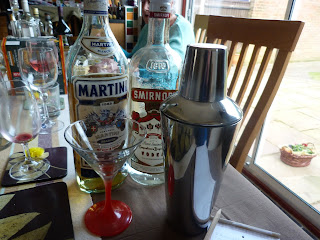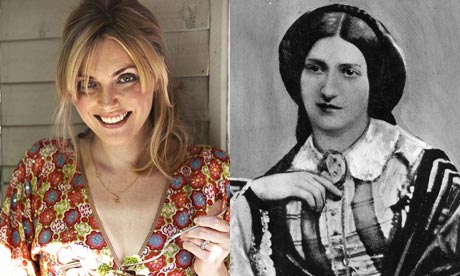I thought that a suitable way to finish my study of Dahl would be with a drink, and nothing epitomises the title of drink more than Dahl's Dirty Martini. The recipe is from Dahl's television programme The Delicious Miss Dahl, which is accessible from YouTube. The video is below and if you go to about 4 minutes 40 seconds on the video you should be able to skip the other recipes and go straight to the important stuff...the alcoholic beverages!
I needed a suitable occasion to make my Dry Martini for and it was lucky that my family were visiting for Easter Sunday.The ingredients for the drink are as follows:
70ml of vodka or gin
1 tablespoon of dry vermouth
2 tablespoons of olive brine
1 wedge of lemon
1 green olive
The method to make the magic potion are as follows:
Pour the vodka, dry vermouth and olive brine into a cocktail shaker with a handful of ice and shake well. Rub the rim of the martini glass with the lemon. Strain the contents of the cocktail shaker into the glass and add the olive.
I followed Dahl's instructions meticulously and was excited to taste the sophisticated tipple. Unfortunately my tastes are more accustomed to cheap wine, as I could only manage a sip of the drink which burnt my throat when swallowing. My cousin drank the drink with a similar forced expression on her face, but my Dad on the other hand thoroughly enjoyed the martini, as you can see from the video below.
I am happy that at least one person enjoyed my skills, but barmaid I am not. Experimenting with Dahl's recipes has been a real treat, and even though I do not see myself as an accomplished cook, I feel that I am one step higher on the very tall ladder to chef-dom. Dahl does have one other cookbook named From Season to Season: A Year in Recipes which I don't yet own, however it is next on my personal reading list and I am keen to explore her other recipes; maybe they will make me the glamorous and successful cook that I am so hoping to be.
On Dahl's website you can donate £5 to her chosen charity The Place2be and in return you will receive a signed photograph from the lady herself. As an avid fan, I of course sent off for my signed photograph which is pictured below; definitely worth the fiver!

































